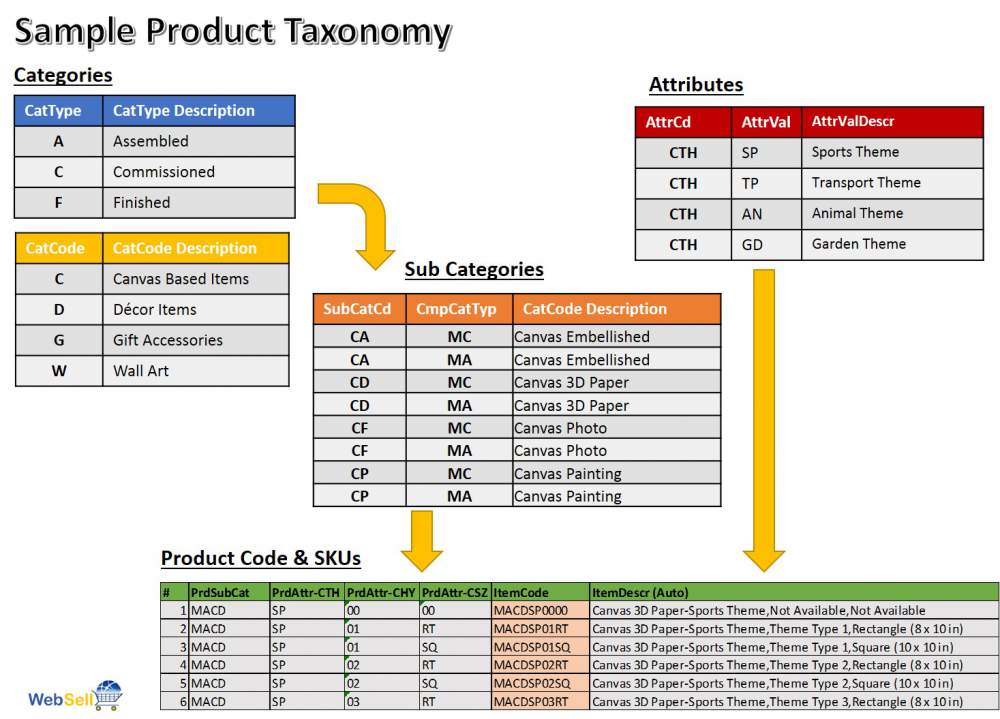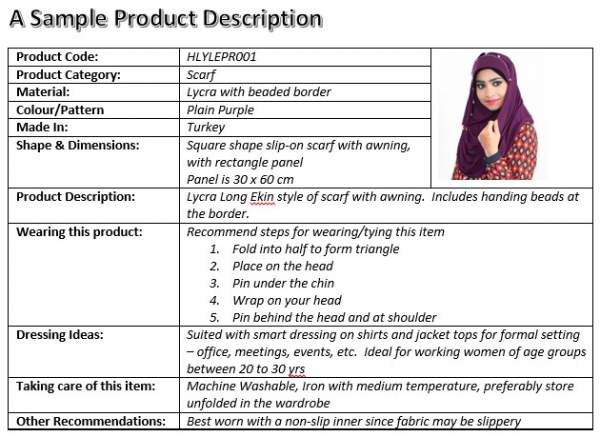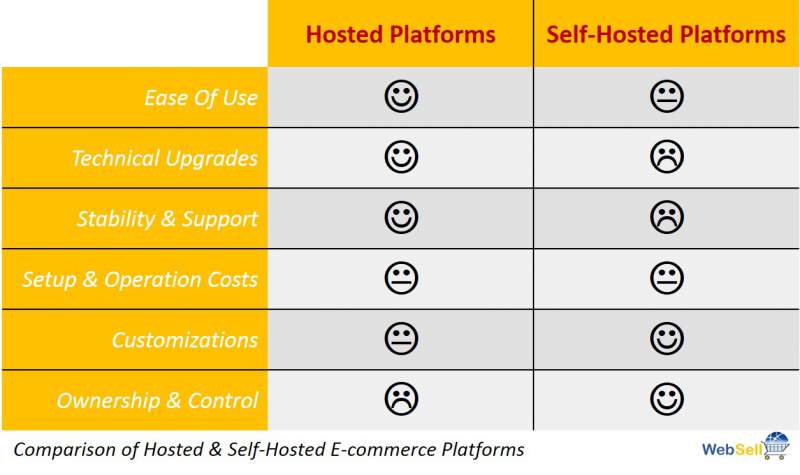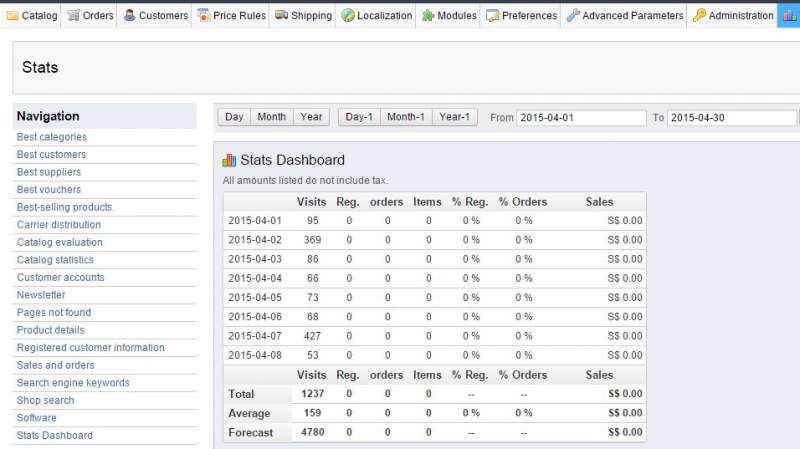Worldwide E-commerce Sales continue to grow at double digit rates year on year. If you too have set out on that route and decided to start an online store, then Congratulations!
But as more and more Click-Only businesses mushroom its necessary to get the prerequisites sorted out before jumping onto the E-commerce bandwagon. Especially, if you are in it for the first time certain key aspects can get easily overlooked causing one to scramble halfway during the project.
So, here’s a comprehensive checklist of the essentials you’ll need before starting an E-commerce Website development. These will prepare you well for a smooth implementation without surprises coming along later in the way.
1. Create the Product Taxonomy
Organizing your product line into categories and sub categories is a must if you want better manageability of your inventory, sales and other back office functions. It also enables you to plan out the website structure and user navigation. What’s more, a well thought product classification can really help in the reporting and analysis of your online retail business.
How to Create a simple Product Classification?
For a small to medium sized business, a 3-tier hierarchy of Product Category > Sub Category > Product Code > Stock Keeping Unit (SKU) is sufficient to cover product variations even if they are in the hundreds. Using Product Attribute variations as a basis for the generating SKUs is a common strategy that can be adopted.

What Tools can be used to manage?
A medium sized product range with a few hundred SKU’s can be easily managed within a Spreadsheet. If you are using MS Excel, leverage the built-in functions and formulae to automatically create intelligent Product Codes and SKU sequences. It’s worth the effort if you are classifying your products for the first time coz the spreadsheet can serve as a reference able Product Master. It would also come handy if you wish to subsequently bulk load the product info into your E-Commerce shopping cart
2. Write Descriptive Content for Product Appreciation
Unlike a physical store, here the shopper cannot get friendly advice or have his/her doubts clarified by a staff. So, its imperative to have an in-depth product description on your E-store. This way you reduce the likelihood of the visitor abandoning the shopping cart due to lack of details.
What you should typically write in the Product Description:
It largely depends on what product you selling. But for the usual items like wearables or accessories, it could be
- Product Name
- Size or Dimensions
- Material Used
- Benefits / Usage Ideas
- Product Features
- Item Care, and so on
Prepare the content in a Word Document which you can later copy paste to your E-store backend.

Keeping a provision for product reviews, answers to commonly asked questions are other ways to provide the necessary info that a shopper may otherwise need.
3. Take beautiful Product Photos
This is a No Brainer…in the virtual world one cannot touch and feel your product. So, ensure you provide good quality pictures of the product with zoom functionality and multi-angle shots. Good photography can actually convince a shopper to buy your product.
Tips on taking product pictures:
If you have the budget, engage a photographer to shoot the pictures and edit them for you. If not, no sweat! You can do some great photography the D-I-Y way too. All you need is a Smartphone with a good camera, a well-lit place, single colour background (simple white screen will do) and perhaps a tripod.
Be mindful of choosing the right frame when shooting. This mainly depends on the product, e.g. for apparel and fashion wear you may want to take vertical rectangle shot; for jewellery perhaps a square frame. Doing this beforehand makes it less troublesome for subsequent editing.
If you have decided for D-I-Y route then here are some resources to get you started –
4. Decide the E-commerce platform to use
This may be one of the most important decision that you’ll make…What platform and technology to use to setup the online store.
Broadly speaking, there are 2 options for an E-commerce setup available. Within each you can choose which platform or provider to go for –
- Hosted E-commerce platforms such as Shopify, Big Commerce, etc which manage and host your online store for a monthly fee or a percentage of your Sales
- Self-Hosted Shopping carts based on open source platforms such as Magento, OpenCart, Prestashop or even carts (such as Woo Commerce) built on top of popular CMS like WordPress. Here you will responsible to administer and manage the technicalities on your own.
Choosing an option that’s best suited for you:
You should decide based on your comfort level. But, here’s a brief comparison that can help you make an informed decision –

5. Determine Site Layout, Aesthetics and Functionality needed
User Experience (UX) and User Interface (UI) play an important role in engaging the visitor and closing a sale on your store. Your website homepage layout, format of individual product page, Cart & Checkout workflow are some of the key elements to plan and discuss beforehand with your developer.
There are ample of platform specific website templates and themes to choose from. Some of them are even custom-made for a specific product niche. Opting for an appropriate template (rather than build the UI from scratch) can cater to 90% of your design requirements. The rest, if need be, can be customised by your developer
Some key design considerations to keep in mind:
- Select a Colour Scheme that resonates with the target audience. E.g. for a women’s product line perhaps a pink or purple colour scheme would be more appropriate
- Site Navigation Ease – Having proper product filtering options (by price, by size, by category, etc) and an intuitive menu are key elements for a good UX
- Mobile friendly rendering of your website on handheld devices
- Functionality to display related/bundled products in order to capture up-sell and cross-sell opportunities
- Capability to offer reward points, coupon codes, loyalty discounts, etc
- Ability to showcase customer testimonials, product reviews, blog snippets, and so on
6. Select the Shipping Methods to offer Delivery
Shipping & logistics are the key functions when it comes to Order fulfillment in the E-commerce business. Customers expect instant gratification and delivery once they have made a purchase. At the same time express delivery for shipping to overseas locations can constitute a significant sum especially if it’s a single item purchase.
The dimensions and weight of your product plays an important role in deciding what Shipping methods to offer. It’s a good idea to enable a Shipping Calculator (if your Shopping Cart has that capability) so that customers have the clarity before proceeding for checkout.
What shipping methods can you offer?
- FREE Shipping – This is one of the most enticing way to motivate shoppers to buy from you. Offer it for local deliveries by including a basic shipping cost in your price J
- Flat Rate – A straight forward way is to implement a flat shipping rate based on the shipping destination and item weight range. Different rates can be set for different countries/region in your shopping cart back-end
- Real Time Carrier Rates – You can integrate real time rates if your courier company offers this facility. This may require some technical back-end work though
7. Choose the Payment Options to make available
Decide which Payment options you want to support for your online store. Options can range from Cash On Delivery, Cheque Payment, Direct Bank Transfer and the more popular Online Payment Gateways provided by the likes of Paypal, Stripe, etc.
The most convenient option:
More and more online business are choosing the convenience offered by Paypal which enables you to accept payments globally through all major Credit Cards or through a Paypal Account. It is the most widely accepted online payment system in the world. Paypal integration is hassle free and readily available for most of the E-commerce platforms.
The main drawback you may find is their processing fees which can go up to 4% of the Sales amount. So, you may supplement this payment option with the Bank Transfer option which can be free for local transactions.
8. Prepare Correspondence Templates, Identify Communication Channels
Most E-commerce platforms offer pre-built Email Templates for customer communications, such as New Order, Completed Order, Customer Invoice, Delivery Slip, and so on. You can either customize these templates with your Logo and message or build new ones with specific layout and content, based on your preference.
Also identify the channels through which your customers and prospects will communicate with you. Support hotline, online chat window or designated email IDs. Identify these beforehand so that they can be setup during the course of development.
9. Draft the Policies and Terms & Conditions
Setting up and running an online store also entails laying out the procedures, policies, terms & conditions that govern the business being transacted through the store.
Since selection, payment and shipping of goods happens without the buyer’s physical presence; it is worthwhile to clarify and pre-empt common problems so as to protect both the buyer’s and your interests.
What information needs to be stated?
Verbose that you will typically need would be –
- Shipping Information
- Returns and Exchange Policy
- Refund Policy
- Privacy Policy
- Terms of Use
Since many of the terms are common to E-commerce Businesses, tools such as this one – Personalized Policy Generator from Shopify which automatically creates a personalized version for you, can be a great help!
10. Decide where to handle Back Office functions
With item quantity, price, tax and shipping costs being recorded in every transaction, most E-commerce platforms offer simple Stock Management and Margin calculation functionality that’s built-in. There’s also a host of reports and analytics that can generated out of the box from your shopping cart software or by installing paid extensions.
What’s recommended?
Leverage your shopping cart software to integrate these back office functions. These can be readily configured and managed rather than use another system or software to track
Concluding…
Every E-commerce project will have its unique set of challenges depending on the type of product being sold, customizations required and the owner’s preferences. However, the above mentioned list will help you pre-empt and fulfill the common needs that will be encountered.
Feel there’s something else important and has not made it to the list? Share your thoughts in the comment box below!




